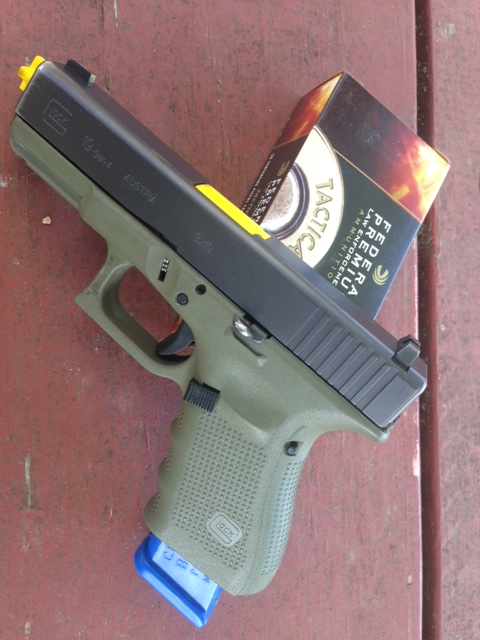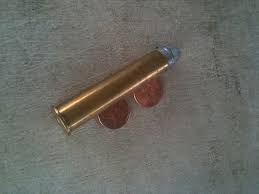
When I am asked what Hojutsu is, I like to say that it is the teaching of pistol craft from a martial arts perspective.
There is, perhaps, nothing in the firearms culture quite as in tune with traditional martial arts, as dry fire. The repetitions of a movement until the technique is perfected, then building speed and power, is the essence of martial arts. Long before the two disciplines of Karate and gunfighting were brought together by Jeff Hall in the modern discipline of Hojutsu, the old west gunfighters had come to the same method of training as the eastern martial artist.
John Westley Harden, one of the most skillful, if least moral, of the old west gunfighters, was said to practice one hundred dry shots a day. Bill Hickok was also known for his dry fire routine.
One of the obstacles to dry fire that inhibited me for a long time was the elaborate safety protocols recommended by some instructors. If I were going to go through as many safety precautions as they recommended, I might as well go to the range and fire real bullets. Nevertheless, safety during dry practice is a real issue. We have all heard the stories of quick draws that ended with wrecked televisions and shattered mirrors, and some are far more tragic. Depending on how you look at it, dry practice is a violation of the first rule of firearms safety (all guns are always loaded).
I personally chose to address this by buying a plastic dummy barrel that drops into my pistol. This renders the pistol inert, and obviously so, because of its bright yellow color. I add to that a weighted dummy magazine, to keep the feel of the pistol the same.
To cover the second safety rule (never let your muzzle cover anything you are not willing to destroy), I place my dry fire target on an exterior wall that is either concrete, or backed up by an empty, wooded hillside. If you don’t have a wall that will stop a bullet, something as simple as a thick stack of old phone books could suffice to contain the bullet, in the unlikely event of a negligent discharge.
The bigger safety issue, as I see it, is maintaining the mental shift between training, and ready- for- action. We do things in the controlled training environment (not just dry practice, but combatives and force on force), that we should not do in everyday, ready- for- danger conditions. I once read an FBI study that found most training accidents happened when police came back to the range after their lunch break. After relaxing for lunch, they failed to shift their mental focus back to a training state.
The dummy barrel helps with this aspect as well. Breaking down the pistol, and inserting the dummy barrel, becomes part of my mental discipline of preparing for dry practice, just as reassembling the pistol with the real barrel readies my mind to transition back to a ready state.
Once I have transitioned my weapon and my mind to a dry practice configurations, with a target the size of the head box at a distance of 21 feet, I start off by moving to step 1 of the draw. If you are unfamiliar with this, at step 1, the support hand is anchored high on the chest, eyes are on the target, and the strong hand assumes a firing grip on the pistol while it is still in the holster.
I go back to a relaxed, hands- up posture, and back to step 1, several times. The reason for this is simple. Step 1 is the most important part of the draw, and if you do not get a correct grip at step 1, nothing else will work correctly.
After a few reps of the above routine, I make a complete presentation to a perfect trigger press on a perfect sight picture; slowly, very slowly. I may use seven or eight seconds to make each presentation. The point is to make each presentation absolutely perfectly. I may do this procedure for five or ten reps.
Once I press the trigger, I will need to reset for the next rep. This is a great opportunity to practice my type one malfunction. Tap the magazine, rack the slide, and reassess the target. I have just achieved three objectives: the sear is reset for the next rep, I practiced my type one malfunction, and I am conditioning myself to go into a malfunction drill any time the trigger produces a click instead of a bang. Now I can practice my scan for additional threats, and reholster.
Once I have completed five or ten reps at slow speed, I set my timer for one tenth of a second faster than the par I want to achieve. In other words, if the time I want to achieve is 1.9 seconds for a head shot at 21 feet, I set the timer for 1.8. Why only a tenth of a second? If 1.8 is good, wouldn’t 1.4 be better? This is not necessarily the case. If you are trying to push your ability too fast, you will become sloppy, and your practice will be counterproductive. For a new shooter, a three- second head shot might be a reasonable goal. As you achieve that time, you can begin trimming the time down.
At the sound of the buzzer, I try to replicate, at speed, the movement I just made slowly. There is a tendency in dry practice to drop the barrel of the pistol as soon as the trigger breaks. This is a bad habit. I try to be careful to maintain the sight picture even after the trigger breaks. I try to do twenty repetitions at speed. If I find I am not maintaining my sight picture, I set the timer aside, and go back to the slow presentations for a couple of cycles before I try using the timer again. I try to get in twenty reps at speed. I find that this is about as long as my attention span is capable of retaining appropriate focus, so I stop there. If I find myself becoming distracted or losing focus, I will stop earlier. I am convinced that a small amount of practice regularly is far more effective (and safer), than a lot of practice when tired and un-focused.
The dry fire routine I have outlined here is what I have learned in my study of Hojutsu, with only a few slight additions of my own. There are many ways and methods of dry fire that can be followed safely, the practices mentioned above are what have worked well for me.
Osu
